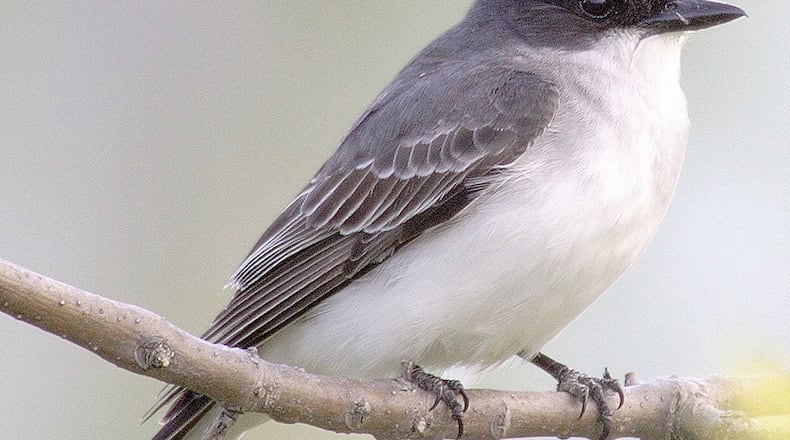Nearly all birds will engage in some level of aggression if they perceive threats to their nests or young. Among songbirds, some of the feistiest assailants — Eastern bluebirds, American robins, gray catbirds, blue jays, Northern mockingbirds — are denizens of Georgia’s yards and neighborhoods.
And among them, the male mockingbird is regarded as the most zealous nest-defender — harassing and attacking other birds, cats, dogs and even people if they get too close to his babies.
An ornithologist friend considers mockingbirds “bulldogs” of the songbird world because of their fearless, tenacious defense of nests and young against all possible dangers. I know this firsthand: On a few occasions over the years, I have been the target of angry mockingbirds swooping and diving at me in my own yard.
However, there is another common Georgia songbird that may far exceed the mockingbird’s pugnacity. It is the Eastern kingbird, a robin-size bird that shuns yards and deep woods in favor of open country. It is often seen perched on utility lines along rural highways from which it sallies forth to snatch flying insects.
The kingbird has been called a tyrant, and its scientific name, Tyrannus tyrannus, reflects its bellicose nature. In his monumental book "Georgia Birds," the late ornithologist Thomas Burleigh said about the kingbird: "No bird is more fearless or aggressive in defending its nest, and the appearance of a crow or a hawk during the summer months is the signal for a spirited pursuit that persists until the intruder is driven out of sight."
IN THE SKY: From David Dundee, Tellus Science Museum astronomer: Summer officially begins at 11:54 a.m. June 21 (summer solstice), the longest day of the year.
The moon will be full on Monday — the “Flower Moon,” as the Cherokee peoples called June’s full moon. Mercury is low in the west just after sunset. Venus is low in the east just before sunrise. Mars is very low in the west around dusk and sets about an hour later. Mars and Mercury will appear close together Tuesday evening. Jupiter rises in the east around midnight and will appear near the moon on Sunday night. Saturn rises in the east a few hours after midnight and will appear near the moon on Tuesday night.
About the Author
Keep Reading
The Latest
Featured

